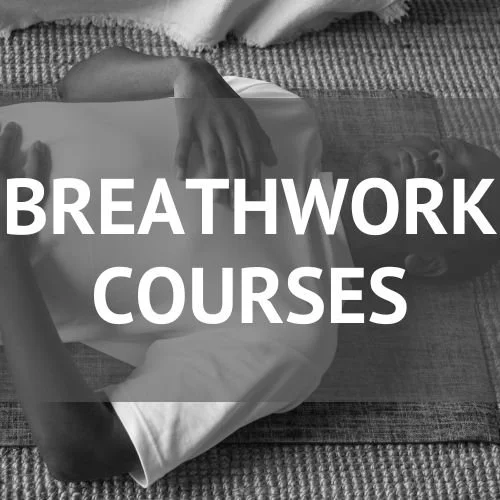Breath of Fire
What is Breath of Fire?
Breath of Fire involves rapid, rhythmic, and forceful exhalations through the nose, followed by passive inhales. It's a diaphragmatic breath, meaning your belly actively pumps in and out with each cycle. While it may seem intense at first, with practice, it becomes a smooth, energizing flow.
The History of Breath of Fire
Breath of Fire holds a significant place in Kundalini Yoga, a practice that aims to awaken dormant energy within the body. It's often referred to as the "breath of transformation" as it's believed to stimulate the flow of Kundalini energy, promoting physical and spiritual awakening.
Who is Breath of Fire Good For?
Breath of Fire offers a wide array of benefits for those seeking to:
Boost Energy and Vitality: The rapid breathing pattern increases oxygen intake, invigorating the body and mind. It's a fantastic way to combat fatigue and feel more alive.
Enhance Focus and Mental Clarity: Breath of Fire can help clear mental fog and improve concentration, making it a valuable tool for students and professionals.
Strengthen the Core and Diaphragm: The active pumping of the belly engages and strengthens the core muscles, improving posture and overall physical strength.
Detoxify and Cleanse: The forceful exhalations are believed to help cleanse the respiratory system and stimulate the digestive organs and lymphatic system.
Balance the Nervous System: Breath of Fire can help balance the sympathetic and parasympathetic nervous systems, promoting emotional stability and resilience.
Join our free, live online breathwork sessions – five times a week, designed to fit your schedule and time zone. Experience a welcoming community and discover the healing potential of guided breathwork.
Breath of Fire
Video Demonstration
Did you enjoy this guided video? Find this video and many more in our Breathing Space Public Library!
A Step-by-Step Guide to Breath of Fire
Find a Comfortable Seated Position: Sit upright in a chair with your feet flat on the floor, or sit cross-legged on a cushion.
Relax Your Body: Close your eyes or soften your gaze. Release any tension in your shoulders, jaw, and face.
Engage Your Core: Place your hands on your lower belly, feeling the natural rise and fall of your breath.
Begin the Breath:
Exhale: Forcefully exhale through your nose, contracting your abdominal muscles to push the air out. Imagine you're forcefully blowing out a candle.
Inhale: Release your abdomen, allowing the air to passively flow back into your lungs.
Repeat: Continue this rhythmic pattern, maintaining a steady and forceful exhale while allowing the inhales to happen naturally.
Tips for Incorporating Breath of Fire Into Your Day
Start with short intervals of 1-2 minutes and gradually increase the duration as you become more comfortable. Here are a few ideas to integrate Breath of Fire into your day:
Morning Energizer: Replace your morning coffee with a few rounds of Breath of Fire to awaken your body and mind.
Midday Pick-Me-Up: When you feel sluggish or unfocused, practice Breath of Fire for a quick energy boost.
Pre-Workout Warm-Up: Use Breath of Fire to activate your core and increase your heart rate before a workout.
Stress Relief: When you feel overwhelmed or anxious, a few minutes of Breath of Fire can help release tension and shift your energy.
Caution:
While Breath of Fire offers numerous benefits, it's crucial to practice it safely and responsibly.
Who Should Avoid Breath of Fire:
Pregnant or menstruating women: This technique can be too stimulating and may affect blood flow.
Individuals with high blood pressure, heart conditions, or epilepsy: The rapid breathing pattern can elevate heart rate and blood pressure, potentially exacerbating existing conditions.
Those with recent abdominal surgery or injuries: The forceful contractions of the abdomen may be uncomfortable or unsafe.
Anyone experiencing dizziness, lightheadedness, or hyperventilation: If you feel unwell during the practice, stop immediately and return to normal breathing.
Potential Experiences:
Lightheadedness or dizziness: These are common, especially for beginners. If they occur, stop the practice and rest.
Tingling sensations: You might experience tingling in your hands, feet, or face due to changes in blood flow and oxygen levels.
Emotional release: Breath of Fire can sometimes bring up buried emotions. It's important to create a safe space for yourself and allow these emotions to surface without judgment.
Important Considerations:
Start Slowly: If you're new to Breath of Fire, begin with short intervals (1-2 minutes) and gradually increase the duration as you feel comfortable.
Listen to Your Body: Pay close attention to any signals your body is giving you. If you feel uncomfortable or unwell, stop the practice and rest.
Seek Guidance: If you're unsure whether Breath of Fire is suitable for you or if you experience any concerning symptoms, consult a qualified breathwork instructor or healthcare professional.
Did You Enjoy This
Breathing Technique?
Here are some other ways to experience breathwork
with Breathing Space.
Free Breathwork Resources
-
Not sure if Breathing Space is the right place for you? Come and join our weekly free online breathwork sessions led by our current trainees, and faculty! Five times a week.
-
We create high quality breathwork resources every month. You are welcome to check them out! The only string is that we ask for credit if using any of the materials.
Practice Breathwork
-
We offer access to a library of breathwork techniques, guided meditations and conscious connected breathwork journeys. Also monthly live breathwork sessions with Benedict Beaumont, founder of Breathing Space.
-
We have a collection of low cost breathwork courses including Rewire, our 12 week transformational breathwork course that all Breathwork Facilitator Students go on. If you take the course and then later want to do the Facilitator Training, the price will be discounted from your Breathwork Facilitator training program costs.
Check out our courses here



